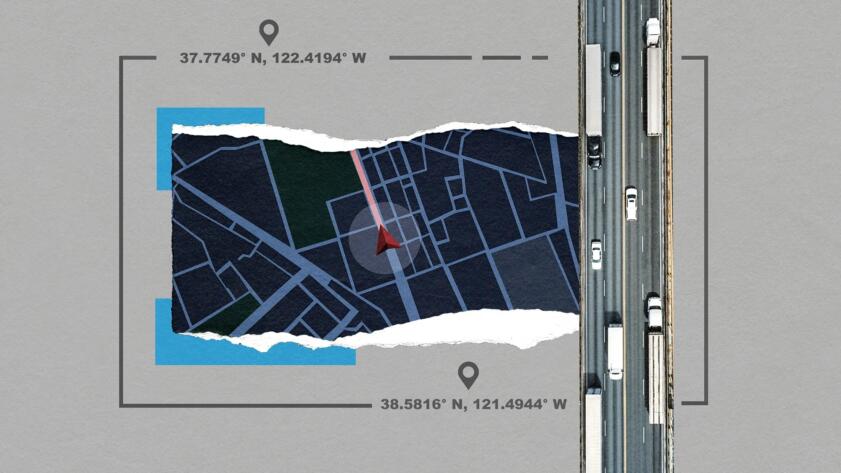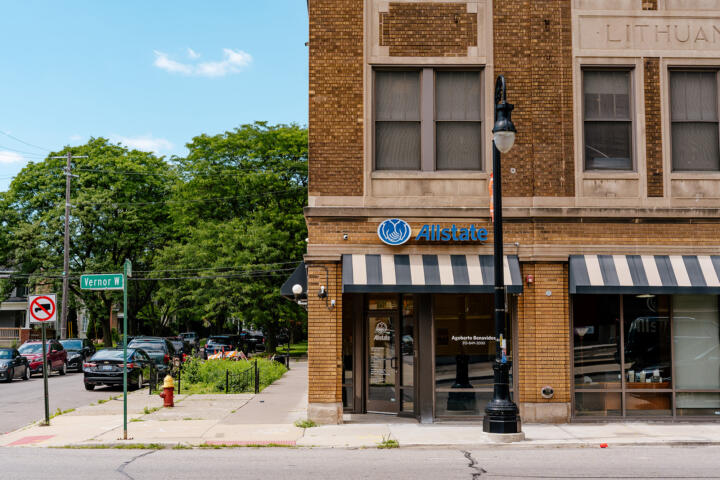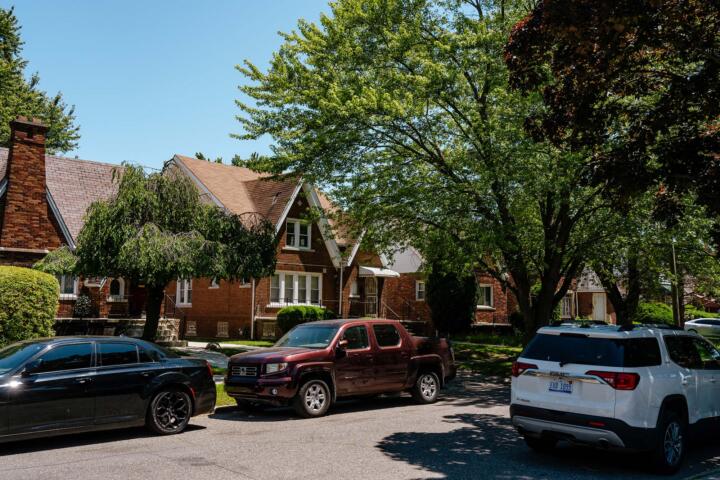This article is coreported with Outlier Media, a service journalism organization in Detroit. Sign up for its newsletters.
Alana, a retired preschool teacher on a fixed income, gave up driving because of how expensive it was to insure her car. Insurance, she recalled, cost more than her monthly auto payments. “I’ve turned down at least three good-paying jobs because I couldn’t get there,” she said. “I was so hurt. I went into a deep depression after that.”
If Alana, a Detroit resident, were to buy car insurance in 2024, it would cost her around $3,500 a year, which is nearly $300 per month. If she moved to a mostly White suburb 13 miles away, it would cost just less than $1,800 each year, which would drop her monthly payment to less than $150.
She is one of three Black women who joined a call with an insurance agent working with The Markup and Outlier Media. The agent compared the auto insurance quotes each person would receive using their current Detroit address with those they’d get if they lived in predominantly White suburbs. This comparison often isn’t possible without an insurance agent’s help; because the agent feared professional repercussions, we are granting all participants anonymity. We’ve given the women pseudonyms because their names could be used to identify the agent.
In 2019, Michigan passed Senate Bill 1, banning insurers from charging customers different prices based on non-driving characteristics, like their zip code, in an effort to “facilitate the purchase of … insurance by all residents of this state at fair and reasonable rates.” The legislation was controversial, with many lawmakers declaring it a success, while others, especially those in Detroit, decried the law as “a major concession to the auto insurance industry.”
Four years after the reform went into effect, an analysis by The Markup and Outlier Media shows critics’ concerns to be largely justified. Loopholes in the legislation continue to allow insurers to make location play an outsize role in what Michiganders pay—with the state’s Black population, especially those in Detroit, particularly penalized.
“When you’re paying [thousands of dollars] more than someone [a few] minutes away from you, when you don’t have a different driving record, when you’re not doing anything crazy, that is egregious,” Michelle, another panelist, said after seeing how her rates would drop by more than $2,800 a year if she moved just outside city limits. “I’ve never had an accident, never had a car stolen, never had my tires slashed, never made a claim. People try to come up with all these reasons, and it’s like, no, really, they just charge more because of where you live.”
“Oh, I feel some type of way,” exclaimed Tonya, whose price dropped by nearly $5,000 a year when the agent shifted her address to a predominantly White suburb about 15 minutes from her home. “You hear of people using another address, but it’s different when you see it live in action. It’s atrocious.”
“This is crazy,” agreed Michelle. “People have explained, ‘Oh, your rate is high because your car is financed.’ … People act like it’s in people’s imaginations when we say, ‘No, really, in Detroit we are getting ripped off.’”
The Reform Let Companies Circumvent Every Ban
Despite its restriction against pricing by “postal zone,” the law contained a crucial loophole: “Automobile insurance risks may be grouped by territory.” Those territories couldn’t be literal zip codes but could take any other shape, from census tracts to custom boundaries.
The law prohibited “redlining” but defined the practice as refusing to offer insurance to customers based on location. Prior to the reform, Detroit drivers were charged so much that an estimated 60 percent didn’t carry insurance.
“[I] believe that the language was written in such a way to actually make territorial rating worse and more discriminatory,” charged Douglas Heller, director of insurance at the Consumer Federation of America, a consumer advocacy group that has aggressively pushed for reforms in Michigan’s insurance market. “This was the insurance industry pandering to some politicians who needed to have some cover but didn’t have any particular concern about preventing discrimination.”
“Advocates and civil rights activists, over the years, have always used zip code as a metaphor for discriminatory territorial pricing, but it wasn’t meant to be a literal critique,” Heller said. “The critique was about the discriminatory use of territory.”
In addition to banning the use of zip codes, the bill also (at least superficially) banned insurers from using sex, marital status, homeownership, educational level attained, occupation, and credit score to set prices.
“For years, auto insurance companies in Michigan have been allowed to consider non-driving factors like your credit score, gender, educational attainment, and zip code in determining your auto insurance rates, and it’s just not right,” Karen Whitsett, a Democratic Michigan state representative, wrote in an op-ed around the bill’s passage, where she took credit for the prohibitions’ inclusion in the legislation. “Beginning July 2020, your driving record will be the primary factor determining your insurance rates.” Whitsett declined a request for comment.
However, The Markup and Outlier’s investigation found that the reform allowed insurance companies legal ways to, in some fashion, circumvent every prohibition it instituted on assessing customers using these protected characteristics. These easily exploitable loopholes allowed insurers to charge some of the highest prices in the country to people living in Michigan’s Black communities.
Reviewing over 52,000 pages of rate filings, in which insurers detail how they set premiums for each policyholder, we examined the pricing structures of the seven auto insurance companies responsible for the most personal auto business in Michigan: Allstate, Auto Club, Auto-Owners, Citizens, Liberty Mutual, Progressive, and State Farm. These documents, which insurers are required to file with Michigan’s Department of Insurance and Financial Services (DIFS), detail how different policyholder characteristics, called rating factors, lower or raise premiums.
We manually cataloged hundreds of rating factors to identify how each insurer’s pricing algorithm took into account a policyholder’s location. We calculated a premium rate based solely on location-based factors for each insurer, then compared these rates to each other to weigh how much more or less someone would pay based on where they lived in the state. Our method of isolating the effect of location does not allow us to calculate the final dollar amount drivers saw on their insurance bill. We could, however, use insurers’ rating factors to tell us approximately how someone’s home address, excluding all other factors, impacted their final insurance premium relative to all other parts of the state.
What Alana, Tonya, and Michelle experienced wasn’t a fluke. Our analysis showed that for every single one of the state’s largest insurers that we were able to evaluate, most Black Michiganders’ premiums were dramatically adjusted upward based on where they lived. Averaging across those insurers, nearly two-thirds of Black Michigan residents lived in each company’s most expensive 20 percent of the state. Michigan’s least expensive locations were, on average, 87 percent White.
In addition to race, we had enough data for three insurance companies to look at income. Despite finding a clear upcharge for drivers living in Black neighborhoods, we did not find a universally clear pattern for drivers living in poorer neighborhoods. While State Farm’s pricing algorithm disproportionately charged the highest in poorer areas, Allstate and Liberty Mutual did not.
Prior to publication, we reached out for comment to all seven of the insurance companies whose pricing systems we investigated. The insurers, by and large, ignored our specific questions about rate-setting practices and defended the prices they charged as reflecting the divergent costs associated with insuring drivers from one region to another.
“We believe our pricing accurately reflects the various risks associated with insuring vehicles in different parts of the state,” Auto Club spokesperson Adrienne Woodland wrote in a statement.
People act like it’s in people’s imaginations when we say, ‘No, really, in Detroit we are getting ripped off.’
Michelle
“We do not utilize, collect or consider information related to an individual’s race in underwriting, premium determination or claims settlement practices,” Liberty Mutual spokesperson Glenn Greenberg wrote in an email.
Representatives from both Progressive and Citizens directed us to Nicole Mahrt-Ganley, assistant vice president for public affairs at industry group American Property Casualty Insurance Association. “Unfair discrimination in insurance rating—meaning treating consumers with similar risk profiles differently—is uniformly prohibited by state law,” she said. “There is a substantial amount of academic research indicating that insurers’ use of rating factors does not result in unfair discrimination.”
Our investigation is based on a “disparate impact” analysis, meaning we exclusively tested whether the algorithms and policies used by insurance companies resulted in pricing that consistently charged more to predominantly Black areas regardless of whether the racial disparity was intentional. Under the current regulatory system, these rates are all considered to be acceptable, legal practices. Although we did not observe in the documents that we reviewed any references to the racial makeup of an area directly affecting elements in how prices were set, the system has left Black residents of Detroit, the most racially segregated city in the United States, paying more based on where they live.
Laura Hall, communications director for Michigan’s Department of Insurance and Financial Services in June 2024, said while the department is unable to comment on any individual company’s filings, regulators individually reviewed and approved each of the pricing systems we examined. “On average, DIFS issues nine objections per rate filing, which must be addressed by the company before the product is allowed to be sold to consumers,” Hall said.
In Detroit, critics of the city’s notoriously steep premiums have pointed fingers at predatory trial lawyers, particularly expensive personal injury protection insurance payouts, and unscrupulous towing companies. “There are full-blown schemes and organizations in Detroit that don’t exist in the suburbs,” said Eric Poe, CEO of CURE Auto Insurance, who noted that shady fees and related legal costs have cost the company millions, driving up rates for all customers. (CURE is not one of the top seven insurers in Michigan, so it was not part of our analysis.)
Insurers also told us that population density plays a large role. “Urban areas have a greater population density, along with congested roads and highways,” said Woodland, the Auto Club spokesperson, echoing a sentiment shared by Liberty Mutual, Citizens, as well as state regulators. “Increased traffic and pedestrians on crowded roads lead to more crashes and therefore, more claims.”
However, even inside insurers’ most densely populated territories, Black residents disproportionately experienced the highest location-related adjustments. If population density played such a central role in how much insurers charge, we should have seen racial disparities disappear within the state’s most densely populated areas. Instead, for every insurer in our analysis, the differences remained.
For example, over 608,000 Black Michiganders and 1 million White Michiganders lived in Auto Club’s densest areas in 2022. But 436,000 (over 70 percent) of those Black Michiganders lived in Auto Club’s most expensive-to-insure parts of those areas, compared to only 252,000 (around 25 percent) of the White Michiganders.
We also looked at whether the price gaps in different locations could be related to higher rates of vehicle crime, such as car thefts or break-ins. To figure this out, we analyzed our data again, but removed any type of insurance coverage that would pay out if a car were stolen or broken into, such as comprehensive coverage, car rentals, and roadside assistance. If crimes were a major reason why insurance costs are so different along racial lines across the state, removing these plans should wipe out those differences, since insurers would no longer be paying for claims related to crime.
For four of the five insurers we analyzed, removing crime-related coverage had little to no effect on the racial distributions of location-related adjustments. In the case of Liberty Mutual, the only insurer with a relatively small but meaningful shift in distributions, the results shifted a larger percentage of people into areas that were more costly to insure. Cutting out crime coverage meant that a higher proportion of both Black and White residents would have received the highest location-related adjustments than did previously.
Carving Up the State
Melissa Love, a single mother of six, lives in a section of Detroit’s westside where car insurance prices can be stratospheric. It was only with the assistance of a legal aid nonprofit that she was able to get out of paying the three tickets she had accrued over the years for driving without insurance. When she looked into getting insurance earlier this year, her quote was for $3,200 a year.
“We are already struggling. I’m a single mother only making $17 an hour. My rent is $1,000. It’s just unbelievable,” Love said. “And now I’ve gotta continue to ride the side streets because I can’t afford insurance. You’ll get pulled over and you’ll get taken to jail if you don’t have insurance.
“It’s probably because of the zip code, honestly,” she added, noting that if she had told an insurance company that her address was in a richer, more White suburb, she likely could have gotten a quote she could actually afford. “It’s privilege, and it’s not fair.”
While carving up the state by zip code was technically banned under the 2019 law, carving up the state using geography was not, and multiple insurers switched to using even more fine-grained methods. Even so, we identified at least one insurer, Allstate, that created territories closely aligned with zip code tabulation areas (ZCTAs), an aggregation of zip codes by the U.S. Census Bureau.
For the five insurers whose rating plans we were able to analyze, a majority of Black Michiganders lived in areas with the highest location-related adjustments in the state. In other words, they were penalized the most for their location. In all cases, the areas with the highest adjustments included Detroit.

The Breakdown
Who Is Collecting Data from Your Car?
A firehose of sensitive data from your vehicle is flowing to a group of companies you’ve probably never heard of
Following the reform, most insurers we examined shifted how they divided up Michigan. Allstate and State Farm, which both previously used zip codes, divided the state into tiny geographic boxes, most of which were much smaller than a typical zip code area. Auto Club stopped using counties and used a smaller geographic unit called census tracts, which are areas drawn by the U.S. Census Bureau with an average population of 4,000 people. For example, Wayne County is divided into 611 tracts for the 2010 census. Citizens was the only insurer that used the same geography before and after the reform, but what it used, census block groups, are even smaller in size than census tracts. Liberty Mutual was the sole insurer to switch to a consistently larger geography, going from zip codes to counties.
Auto-Owners and Progressive used zip codes before the reform and moved to custom maps after. However, because the maps were so customized, we could not match them accurately to census data, so we did not do a disparate impact analysis on these two insurance companies.
When Allstate introduced its grid-based rating system in 2020, the company filed documents highlighting the differences from its old zip code–based map. Since no zip code perfectly matched the squares on Allstate’s grid, the company could claim it had stopped using zip codes, as the law required. However, when we identified the territory borders across which there were major adjustment differences, 84 percent lined up with ZCTA boundaries. Only 55 percent were along census tract lines.
The pricing systems of Auto Club and Citizens showed strong correlations between areas’ location-related adjustments and racial demographics. For both insurers, about 7 percent of the state’s White population lived in areas with the highest adjustments, while more than half of Black Michiganders lived in those same neighborhoods.
For the other three insurers we analyzed—Allstate, Liberty Mutual, and State Farm—we did not find conclusive evidence of correlation, or lack thereof, between race and location adjustments. To look for correlation, we used a statistical test that, while the most appropriate for our data, isn’t particularly sensitive to outliers, like how Detroit is much more expensive than the rest of the state. For these three other insurers, looking at the demographic composition of the areas with the highest adjustments, they were still disproportionately Black.
These location-based adjustments could be significant. Allstate’s Drivewise program directly tracks participants’ behavior, like speeding or using a smartphone while driving, adjusting premiums accordingly. If Drivewise identified someone as an especially terrible driver, at most, it can raise their rate by 40 percent—the same relative increase a policyholder would experience, on average, moving from a predominantly White area to a predominantly Black one.
For the two insurers we had enough data on to make the comparison, Allstate and Liberty Mutual, the percentage of the state’s Black population living in the most expensive locations grew slightly larger following the reform. A larger portion of White Michiganders also lived in the most expensive locations post-reform, but a much bigger share of Black residents still lived where car insurance costs were the highest. Rates became more equitable across racial lines, but not because the share of Black residents living in the most expensive areas shrunk.

Allstate’s Algorithm
Suckers List: How Allstate's Secret Auto Insurance Algorithm Squeezes Big Spenders
Insurers are supposed to price based on risk, but Allstate’s algorithm put a thumb on the scale
State Farm divided up Michigan such that half of the state’s lowest-income areas had the highest location-related adjustments. Allstate and Liberty Mutual, whose pricing systems we also had enough data to analyze along economic lines, showed the most expensive parts of the state equally divided among all income groups.
A crucial dividing line separating high adjustments from dramatically lower ones was 8 Mile Road, which bifurcates the city of Detroit from its northern suburbs. In two westside census tracts in Detroit, Auto Club customers who lived south of 8 Mile could halve their adjustments if they moved across the street.
“If I move across 8 Mile, I guarantee my insurance will drop,” said Glynn Miller, a lifelong Detroiter who pays $1,600 every month to insure his five cars and Harley-Davidson motorcycle. “[The price disparity] is very disheartening, but that’s the way it is. I do wish we could do something about it.”
“I love the city of Detroit,” he added. “I’ll never leave.”
Steep drops were common when crossing out of Detroit.
Auto Club’s location adjustments in Cornerstone Village, a majority-Black Detroit neighborhood, were 50 percent higher than they were less than 10 minutes away in an almost entirely White area in Grosse Pointe Farms, home to the Detroit Country Club but sitting just outside of the city.
About seven years ago, Jacob Glide moved from Ferndale, a city just to the north of 8 Mile, to Detroit. He now lives a five-minute drive south of his old place, across 8 Mile. When he moved, his insurance rates with Auto Club quadrupled. He switched to Progressive, which offered him a rate merely double what he was paying before. He currently pays around $5,000 a year to insure his two cars.
“I don’t remember saving much after the reforms in 2019,” Glide said. “We did not notice our insurance going down.”
Liberty Mutual was the only insurer to lump Detroit together with the rest of Wayne County. As a result, the county with the largest Black population saw a location-related adjustment 50 percent higher than the state’s median. Residents of Genesee County, home to the city of Flint and the second-largest proportion of Black residents in the state after Wayne, experienced the second-highest adjustment.
Compare Detroit to locations further away, and the gaps widened dramatically.
State Farm policyholders in a 97 percent Black portion of Detroit’s Morningside neighborhood saw an adjustment nearly seven times that of Saline Township, about an hour’s drive southwest—the largest disparity in our analysis.
Even excluding Detroit from the analysis entirely, about half of the state’s Black population outside of Detroit live in a territory with the highest location-related adjustments for every insurer we analyzed.
For example, in southwestern Michigan, under Citizens’ rating plan, riverside neighborhoods in Benton Harbor showed adjustments nearly twice what people pay in St. Joseph, across the river. Benton Harbor is over 80 percent Black; St. Joseph, over 80 percent White. It takes around three minutes to drive from the post office in Benton Harbor to the one in St. Joseph.
Sheila Cockrel, a lifelong Detroiter, a former Detroit city councilmember, and current executive director of civic engagement nonprofit CitizenDetroit, tied the elevated rates paid by the state’s predominantly Black communities back to historic redlining practices that often trapped people of color in marginalized, segregated neighborhoods.
“They’re fundamentally connected, one flows from the other,” she said. “It’s not as blatant, but it’s still all rooted in the same set of expectations that the less White, the less middle-class the community is, the less value it has, and therefore the more risk there is in that neighborhood. And therefore you get to charge those people more money.”
Judging the Risks
Insurers justify a policyholder’s prices on how much it has historically cost to cover similar customers. Drivers with histories of at-fault collisions may continue to put themselves at risk, so insurers make them pay more. Customers who also have a life or boat policy with the company can be cheaper to insure because bundling different policies can reduce administrative costs.
The litany of different policyholder characteristics is a primary reason many insurance company websites can only provide quotes for the addresses where someone actually lives, according to Beth Swanson, a content specialist with The Zebra, an insurance quote aggregation and information site.
“[Setting someone’s price] is a complicated task and takes a lot of resources,” Swanson explained in an email. “Companies won’t want to use all those resources unless it’s going specifically to the person/location it is actually going to be used for.”

Privacy
Car Tracking Can Enable Domestic Abuse. Turning It Off Is Easier Said Than Done
Internet-connected cars allow abusers to track domestic violence survivors after they leave
Each state imposes its own rules limiting which customer characteristics insurers can evaluate, and how those characteristics can be deployed to set prices. We based our analysis only on rate filings reviewed and approved by Michigan regulators.
Since we conducted a disparate impact analysis, our investigation did not examine how much insurers have had to pay out relative to the prices they’re charging. When we shared with insurance companies our analysis of their pricing systems, some of them criticized our methods for solely looking at location adjustments without also examining the costs companies incurred covering claims in different parts of the state.
Emily Trevallion, a spokesperson for Hanover, Citizens’ parent company, said our analysis was “fundamentally flawed” because, “by focusing on the singular rating factor of location, it fails to consider actual loss costs and therefore cannot accurately reflect how insurance companies determine the price of insurance coverage.”
Allstate communications manager Ben Corey wrote in an email: “This report is not accurate because it omits important factors for determining rates, including accident frequency and severity by area and the costs to cover customer claims. Our rates reflect the cost of providing the protection our customers depend on.”
In a 2017 ProPublica investigation, journalists (who went on to co-found The Markup) compared data about how much it costs, on average, to insure vehicles against premiums charged to customers across California, Illinois, Texas, and Missouri. They found “many of the disparities in auto insurance prices between minority and white neighborhoods are wider than differences in risk can explain.”
Even so, a newly released report by the Department of Insurance, Securities and Banking in Washington, D.C., found that while Black auto insurance policyholders typically paid more than White ones, they also tended to cost insurers more in terms of direct payouts. D.C. prohibits all location-based pricing in its car insurance market.
“There’s definitely what the law intended. And what we’ve got is something very different,” said Amanda Nothaft, the director of data and evaluation at the University of Michigan’s Poverty Solutions program. “I wouldn’t blame the insurance companies. I would blame the legislature’s leaders. It’s like they didn’t look at any other states’ laws. There were a bunch of … states that have made reforms in the past 20 years, and they didn’t look at them.”
Aric Nesbitt, the state senator who introduced the 2019 legislation, did not respond to multiple requests for comment.
How Insurers Are Exploiting Legislators’ Loopholes
Years after the reform law went into effect, Progressive’s motorcycle insurance in Michigan still grouped customers by zip code. Progressive was able to use zip codes because the law explicitly excludes insurance for motorcycles, which the legislation defines as not being a “motor vehicle.”
Of the seven insurers whose motorcycle plans we examined, four exploited this loophole, including by using rating factors prohibited for autos, like homeownership and marital status. Single people tended to be charged more than married people, as did non-homeowners.
“Discrimination against working-class people shouldn’t be acceptable if they happen to ride motorcycles,” Heller said.
The reform bill didn’t just leave open a loophole big enough to drive a motorcycle through; it also allowed insurers to circumvent many other pricing prohibitions.
Insurers are still finding ways to get around reforms intended to prevent discrimination.
Rep. Rashida Tlaib, Democrat who represents western Detroit and its suburbs in Congress
For example, the reform bill blocked credit scores but allowed insurers to use insurance scores. Frequently sold by the same companies, insurance scores are developed with a subset of the financial history information used to calculate credit scores, prioritizing things like someone’s history of making timely debt payments.
A 2023 Consumer Federation of America report found that “Michigan is among the states with the worst penalties associated with consumer credit history,” with safe drivers with poor credit paying, on average, 263 percent more for insurance than identical policyholders with good credit. Detroit has the lowest median credit scores of any major city in the country, according to a recent WalletHub report.
Looking at rate filings from the companies we analyzed from the years prior to the reform, we did not find any using credit scores to set rates. The ban on credit scores prohibited a practice not actually in use by insurers covering 83 percent of Michigan’s auto insurance market, if not more.
“Ban credit scores and they use ‘insurance scores’ from the same companies. Ban zip codes and they come up with even more precise location discrimination,” said Rep. Rashida Tlaib, a Democratic member of Congress representing western Detroit and its adjoining suburbs. “This report confirms what our residents have been telling us. Insurers are still finding ways to get around reforms intended to prevent discrimination.”
In 2019, Tlaib introduced federal legislation that would have prohibited credit reporting agencies from providing consumer data to auto insurance companies. The bill never made it out of committee; however, earlier this month, Tlaib introduced another bill to help low-income families deal with high insurance payments by factoring how much they pay for insurance into government benefit calculations.
While Michigan’s reform law also barred insurers from adjusting premiums using education-based rating factors, it did not bar giving discounts, which can only reduce someone’s rates. Five insurers offered some form of a “good student discount,” lowering rates for full-time students under the age of 23, 24, or 25 with high GPAs. These restrictions leave out many older and part-time college students, who tend to be disproportionately people of color.
Chris Gilliard, who taught for over a decade at Macomb Community College north of Detroit, said these eligibility restrictions would leave out a lot of his most responsible pupils. The notion of a “traditional student” is “very mistaken,” said Gilliard, now a research fellow at Harvard’s Kennedy School. “A lot of those folks are not going to be under 25. They’re not going to be what’s considered full-time.”
Bait and Switch
The 2019 reform wasn’t just about regulating what contentious characteristics insurers could use to set prices. It also aimed to lower premiums across the board by offering drivers cheaper policies that would also be cheaper for companies.
The legislation’s highest-profile changes eliminated requirements that all drivers purchase insurance covering the cost of all injuries and damages to the vehicle resulting from an accident, regardless of the total cost of damages and regardless of who was at fault. For multiple reasons, including the fact that auto insurers don’t have the same negotiated discounts with medical providers as health insurers, that led to costly claims for insurers. Michigan drivers are now able to purchase cheaper personal injury protection insurance with an upper limit on what it can pay out.
In some respects, the reform did exactly what it promised: Rates across the state quickly fell by almost 20 percent. According to the Insurance Research Council, in the two years before the reform went into effect, Michigan and Florida had the two highest increases in uninsured motorists of anywhere in the country. In the subsequent two years, Michigan saw the single largest decrease.
[Insurance companies] already knew that they were going to be able to get around it.
Jeff Irwin, Democratic state senator
In other ways, the problem has remained gridlocked. Drivers still, by and large, pay the highest prices in the country. Despite sky-high rates in Detroit, premiums also dropped almost 20 percent like the rest of the state. The reform’s benefits were distributed evenly, according to a report from the University of Michigan’s Poverty Solutions, even though the bill should have led “to larger declines in Detroit than the state overall because the exclusion of non-driving factors in rate-setting should have a larger impact in majority-Black areas most severely impacted by discriminatory rate-setting practices.”
Nothaft, a co-author of that report, said she’s subsequently seen the prices Michigan drivers pay tick back up. “Rates are back where they were prior to reform,” she said.
Jeff Irwin, a Democratic state senator, cited his sense of a bait and switch around the prohibited factors as a reason he voted against the bill. “[Insurance companies] already knew that they were going to be able to get around it. They only put those clauses in there to convince legislators that it was going to have that effect when they, and I, knew it would not,” Irwin recalled. “[They] put zip code in there … to get people to believe this would end geographical rating when everyone who was reading it carefully knew that it would not.”
Lawmakers even attempted to close these loopholes during the debate surrounding the bill’s passage.
State Rep. Isaac Robinson raged against the reform’s false promise, begging his colleagues to add a prohibition on geographic rating, if only on some types of insurance.
“This is a little compromise. This doesn’t even say ‘ban territory for everybody.’ … I just wanted a real deal that had equity, principles of justice,” he pleaded on the floor of the state’s House of Representatives in May 2019.
“I still have hope, before this day ends, that somebody will say, ‘Give them some crumbs,’” said Robinson, who died the following year at age 44 from complications related to COVID-19.
The Republican House speaker announced the amendment’s failure seconds after Robinson finished his plea.
Alana, the former preschool teacher who gave up driving due to insurance costs, has a plan to get back behind the wheel.
She’s finishing an online master’s degree in professional writing, which she hopes will get her a job paying enough to afford a car. Lack of transportation forced her to turn down a series of other opportunities, so she needs this one to allow her to work remotely.
Car ownership is going to be expensive for Alana because Detroit is where she’s made her home for the past 22 years. The situation forces low-income Detroiters to make a choice between the city they love and a place where they can reliably get around—but it’s one that Alana wants to leave in the rearview mirror.
“I had to let [driving] go for a couple of years because it was stressing me out so bad,” Alana said. “But I have no intention of giving up.”











